UPDATED POST: When I first posted this last year, I mentioned it may be incomplete due to not seeing (or remembering that I had seen, as it turned out) some Rankin Bass specials. I’ve since seen them, and have updated below my thoughts about how they might, or might not, fit into the series.
I mentioned this in our podcast about Christmas movies last year (listen to it here).
The Avengers didn’t do it first . . . You think Marvel was breaking new ground when they rolled out their individual characters and then brought them together in one big movie? No! Back in the ’70’s Rankin Bass did the same thing with their Christmas specials!
As a kid, we could only watch Christmas specials if we caught them when they happened to appear at a certain time on a certain night in December. Iif we missed them that was our only chance until next year, so we would study the top of the TV listings for certain things. Like the one-two punch of the Charlie Brown and Garfield Christmas specials. And Fat Albert. And for a long time, I hoped that the Star Wars Holiday Special would appear as a rerun. (Seriously. I had NO idea that it was hated by Mr. Lucas.)
And there were certain Christmas specials that caught my imagination. They had interesting character designs and stories that bordered on the mythic, had they also had some pretty hockey song and dance routines . . . although, the music always was (and is) catchy. The stories covered Rudolph, Frosty, Santa, and, of course, the First Christmas. On a practical level, puppets in some films were reused in other films. But then, these storytellers did a crossover: Frosty and Rudolph appeared together in a special. In other words, Rudolph and Frosty lived in the same universe. And in other, later specials, little references were dropped in (like Mrs. Claus’ name before she married Santa).
I’m talking, of course, about the Rankin Bass Christmas specials. Usually based on a popular Christmas song (and sometimes a book), these animated (sometimes stop motion, sometimes cell animated) specials became annual favorites.
And all of those stories were connected? Well, yes. Loosely. But as a geek, I started figuring out how, indeed, these specials could be woven together into one, long story arc.
And so, I present to you the “viewing order” of how these specials could be (nay, SHOULD BE!) watched, in order to be seen as a long story, with character arcs and mythological backstories. To be clear, those stories were not meant to be watched this way, and there are way geeks refer to as “continuity errors” galore. Still, it makes for something fun to think about. This list does not include some of the more modern sequels (like the CGI Island of Misfit Toys, which I understand to be horrid, and the Miser Brothers Christmas, which is also stop motion animation, but I haven’t had a chance to see, or the Frosty Returns that featured John Goodman as Frosty and just wasn’t all that good). But for the most part, if it was made by Rankin Bass and had a somewhat Christmas theme, it got on the list.
Spoilers ahead. If you wish to avoid spoilers, just glance ahead and look at the bold titles to see the viewing order and skip the notes. At the end of the article, you’ll find links to where you can purchase them from Amazon . . .
THE RANKIN-BASS EPIC CHRISTMAS MINI-SERIES

Nestor the Long Eared Christmas Donkey — Every Rankin Bass Christmas special has a narrator. These narrators usually were voiced by a well known celebrity, and often got to sing. And for this story, the narrator is Santa Claus’ donkey . . . who starts his story singing about how everyone knows about Rudolph, but there’s a Christmas story that doesn’t get told. The story of Nestor, the donkey who had such long ears that he gets picked on. In fact, it’s the Rudolph story, with two exceptions: his mother dies and he apparently took part in the story of the original Christmas story . . . by carrying Mary to Bethlehem and wrapping her in his enormous ears to protect her from the cold. And the donkey’s memories of his warm nights in a stable is what directs them to their stable. It’s a classic “misfit” story, and to make sure you know this, they keep singing about the comparisons to Rudolph. (It features a song “Don’t Laugh and Make Someone Cry”, perhaps because they felt the message from the earlier Rudolph story was too subtle?)
So this story fits into the actual “Rankin Bass” Christmas universe, with Santa and two elves from The Year Without a Santa Claus and Rudolph appearing. But it also acts, for the purposes of this epic series, as the origin story of Christmas itself. This is the prologue. The story that sets it all in motion.
It alternates between cheesy and disturbing and cute and dark. Rewatching it this year, I could not help but smile at it. And with it.
Length: 1/2 hour; Animation Style: Stop motion; Year: 1977
Crossover Characters: Santa Claus; Mrs. Claus; Rudolph; Jingle; Jangle; the other elves and reindeer
Santa Claus Is Coming to Town— This is the origin story of Santa Claus. (Although in the ’80’s they did another origin story, based on
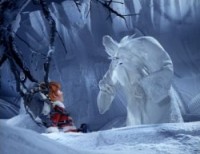
Oz’s Baum book The Life and Times of Santa Claus — but we’re going with this one.) It’s the story of why Santa has so many names, how he met the future Mrs. Claus, why he brings toys. All that stuff. Interestingly, much of it comes from Winter Warlock, an evil wizard who becomes reformed and gives Santa a number of things, including magic beans that make reindeer fly.
The references Nestor’s story, in a way, as Santa looks for the best time to deliver presents to children. He chooses December 24, because of its special significance.
The elves in this story are different from the elves in other versions, but that’s one of those little things that you just have to let slide.
The fantasy elements of this story always resounded with me, and might be what caused me to become such a big fan of the Rankin Bass Christmas tales, and these elements also makes it easy to see why Rankin Bass would later animate movies based on J.R.R. Tolkien’s writings.
Length: 1 hour; Animation Style: Stop Motion; Year: 1970; Based on: The song “Santa Claus Is Coming to Town” by by J. Fred Coots and Haven Gillespie.
Crossover Characters: Santa Claus; Mrs. Claus; Rudolph (briefly)
Jack Frost — Another origin story. Jack Frost is one of the winter spirits who brings winter (can’t help wondering if Cold Miser is part of that gang – but more on him later). I rarely saw this one as a kid (I think I saw the entire thing once and parts of it another time when I was visiting a friend’s house), but it left a lasting impression, both from story and designs.
The story has Jack Frost wanting to become human because he was in love with a human girl. But the girl is in love with, literally, a knight in shining armor. And the bad guy, Kubla Kraus, is in love with the girl. It’s a weird love . . . triangle? Love rhombus? Yeah, let’s go with that one. And, meanwhile, Kubla Kraus taxes everyone to abject poverty, but still at Christmas they are able to give the gifts they want to give, by just giving people imaginary gifts! There are many, many fairytale elements, too. It’s not as bright and happy as some of the others, and yet it still feels optimistic.
And then there are the characters. Both good and bad, the character designs are just cool. The other winter spirits, Jack’s peers, are interesting and strange. And Kubla Kraus’s army are steam powered knights and he rides a steam powered horse! Here’s some pictures I was able to find of these characters . . .



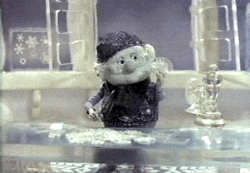

Kuble is such a bad guy that he has to create an army to follow him, a horse to carry him, and a lackey to agree with him. The lackey’s name is dummy, and is part of a BIG plot point at the end.
When we see Jack Frost later in this series, he has changed much. Why, it’s almost as if when he appeared in Frosty’s Winter Wonderland, they didn’t know his backstory! Of course, they didn’t . . . BUT, I can just see him, after the events of this story becoming bitter (pun not intended) and angry. It’s a cool (pun sort of intended) character arc . . .
Length: 1 hour; Animation Style: Stop Motion; Year: 1979; Based on: original story by Romeo Muller
Crossover Characters: Jack Frost
‘Twas the Night Before Christmas— Let’s not forget the glue keeping this story together. When last we saw Santa, he was pretty happy
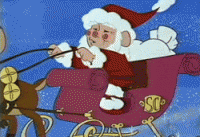
giving out gifts. But this particular year he gets a letter from Junctionville, NY, signed “all of us”, saying they don’t believe in him. Of course, it only came from one smarty-pants mouse who lives in the house of a clock maker. The town tries to gets Santa to come by building a clock tower that sings a song, hoping that Santa will hear it when he flies over. But the smarty pants sabotages it. So it looks like Junctionville will miss Christmas . . . because Santa is not going to come to a city that doesn’t believe! Of course, smarty pants sees the error of his ways (after father mouse gives lectures about faith and responsibility), fixes the clock, and Santa comes, allowing the clock maker to narrate the classic poem as Santa leaves gifts and then leaves.
In this one, we get a glimpse of Santa’s humanity, in spite of his immortality. This will show up again, soon.
Length: 1/2 hour; Animation Style: Cell; Year: 1974; Based on: The poem “A Visit from Saint Nicholas”, written in the early 1800’s, which opens with the first line “‘Twas the night before Christmas . . .”
Crossover Characters: Santa Claus

The Year Without a Santa Claus — Well, last time Santa was just going to skip one city. This time? The whole world. We’re REALLY raising the stakes.
And why? Because Santa has a cold. The doctor says he needs to take some time off, and Santa issue a press release that Christmas is cancelled. There’s some talk about believing in Santa Claus or not, too, although I’m not sure why. I mean, he issued a press release and the paper ran it like he was a real person. Anyway, Mrs. Claus sends two elves (Jingle and Jangle, who appeared in Nestor) and Vixen to go and get people to have Christmas cheer, to cheer up Santa.
The elves and Vixen have to pass between Heat Miser and Cold Miser, and we see that they are bad dudes. When Santa hears of all this, he goes after his friends and finds himself in Southtown, which sets up a weird scene where Santa Claus sings a song about believing in Santa. According to the song, he does. Also according to the song, Santa sometimes would not just bring presents to the living room, but tiptoe into kids rooms and sing to them about believing in him? Creepy.
Obviously, Christmas is saved. But Santa’s still showing a little bit more of that immortal strain. Fortunately, he does get a little boost from the children of the world.
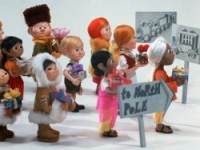
Length: 1 hour; Animation Style: Stop Motion; Year: 1974; Based on: The book by Phyllis McGinley
Crossover Characters: Santa Claus; Mrs. Claus; Jingle and Jangle the elves; Vixen
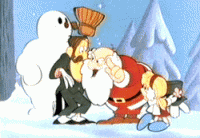
Frosty the Snowman — You know the story. Magic hat . . . snowman . . . comes to life . . . says “happy birthday” (I love this detail) . . . winter wanes . . . heat will melt Frosty . . . so he goes to a colder place.
There’s more to it, of course. First of all, the magic hat? Really, they stole it from the magician. And the Santa forces the magician to let them KEEP the hat, and beyond that, punishes him for wanting it back. Unless you subscribe to schoolyard thinking like “finders, keepers”. Either way, I’m not sure I trust Santa’s definitions of “naughty or nice”. Nitpick aside, I love this story and the heart warming and snow melting ending.
How does it advance our story, though? It’s Frosty’s origin story. And Frosty figures heavily from here on out.
Length: 1/2 hour; Animation Style: Cell; Year: 1969; Based on: The song by Jack Rollins and Steve Nelson
Crossover Characters: Frosty, Santa Claus
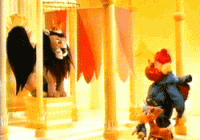
Rudolph the Red-Nosed Reindeer — The story that started it all . . . for Rankin Bass, anyway. This hour long movie expanded on the song. A LOT. And the fantasy elements (especially the island of misfit toys) start here, along with a lot of the thematic elements of doing good and not fitting in start here as well.
I don’t think much of a plot synopsis is needed here, considering this is the most popular and well known and parodied of the Rankin Bass Christmas specials. It’s also possibly the least liked in some ways, too, especially when you consider the way those in authority act toward Rudolph and Hermey (the elf who wants to be a dentist) and the barrage of rejection throughout the story — unless that which causes people to reject you is actually some sort of superpower or something. (“Yes, we’ll make fun of Rudolph . . . until he proves his worth.” “We’ll fear the abominable . . . until he proves his worth.” “We’ll mock Hermey . . . until he proves his worth.”) The same thing happened to Nestor.
All that aside, I’ve always enjoyed this special and the little twists and character designs and characters. Except Santa. He has no excuse. He went from being such a good guy to be sort of petty toward people who don’t believe in him to being judgmental of that poor magician whose just trying to make a living and has his hat stolen to being downright disappointing in his rejection of a reindeer that’s different. I’d like to think that this is the turning point of his character arc. He let himself become jaded by his job, but after he realizes how wrong he was about Rudolph, and then gives those misfit toys a chance in a new home, he’s much more “heroic” after this. Well, sort of . . .

Length: 1 hour; Animation Style: Stop Motion; Year: 1964; Based on: The song by Johnny Marks
Crossover Characters: Rudolph, Santa Claus, various Reindeer
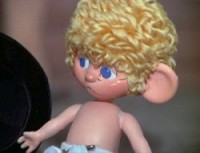
Rudolph’s Shiny New Year — A direct sequel to Rudolph. But the repsonibilites he now takes upon himself . . . he’s not just pulling a sled to save Christmas, he’s saving New Years! And not just New Years! But TIME ITSELF!!! Yes, Father Time contacts Santa just after they returned on Christmas Eve, sending him a letter begging for help to find Happy the Baby New Year. Because if that baby is not found, on the first of January there is a baby New Year . . . December 31st will go on forever! Yes. No kidding. Why? Because a vulture named Aeon wants to live forever, and is destined to only live for . . . an eon! And that eon is almost up!
It’s another “misfit” story, too, with a baby whose ears are enormous! And so, he goes on the run through islands that represent passed ages and just when he starts to make friends, well, he ears make people laugh. So he runs off to the next island, pursued by Aeon and by Rudolph and some pretty awesome sidekicks. Again, we get some crazy awesome characters with crazy awesome designs.
But Santa, really, you’re going to send a young, untested reindeer out on a mission like this? Alone?

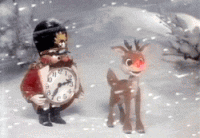
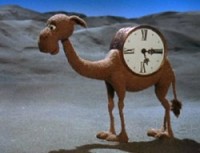
Length: 1 hour; Animation Style: Stop Motion; Year: 1976; Based on: Nothing but Muller, Rankin, and Bass’ insane imaginations
Crossover Characters: Santa Claus; Rudolph; Big Ben; Father Time
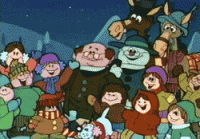
Frosty’s Winter Wonderland — Since Frosty the Snowman, a cartoon based on a song, was such a success . . . why not find ANOTHER song and do a cartoon about that too? Ordinarily, I’d say this to mock the creators. The cynic in me is not a fan of just shoehorning one concept into another to do what may end up being a subpar grab for more dollars. But this actually works.
Also, this is the special that introduces two important character to the mythos we’re chronicling here: Jack Frost and Crystal.
Crystal shows up in a later special and Jack shows up in two more. We’ve already talked about the first — his self titled origin story, which was made after this one — and we’ll talk about his next below. But this appearance takes place decades, perhaps even a century or more, after Jack Frost wanted to become human for love.
I can’t help imagining a tragic, romantic spiral downward occurred to good old Jack over the passage of time. Jack becomes a spiteful, bitter little sprite, remembering his love and the misunderstanding behind it and then Frosty, that upstart who became popular just because of a magic hat, comes around and takes all the glory? And Frosty has found love? Something Jack thought he found, but lost?
Yes. Yes I am probably reading too much into it. But Frosty’s love, Crystal, shows Jack some warmth and brings him back from the abyss of pain and loneliness and his cold, hard heart begins to melt.
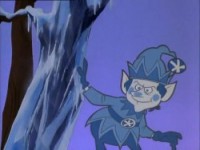
Length: 1/2 hour; Animation Style: Cell; Year: 1976; Based on: The song “Winter Wonderland” by Felix Bernard and Richard B. Smith
Crossover Characters: Frosty, Crystal, Jack Frost
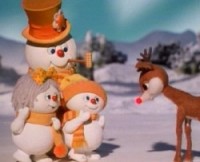
Rudolph and Frosty’s Christmas in July — This one actually got a theatrical release in ’79! SUMMER of ’79. I didn’t know that until I started writing this.
This is also the reason for this whole article. Here is where all the strands get pulled together. Frosty and Rudolph are together. Jack Frost appeared in Frosty and in his own special, and in this movie he looks like he did in his own special so he must be the same character as appeared in Frosty’s Winter Wonderland. Big Ben makes an appearance. Mrs. Claus is called “Jessica”, so she’s from Santa Claus Is Comin’ to Town but this is the same Santa as in Rudolph and Year Without a Santa Claus, so those three stories are about the same characters.
But beyond that, there’s a whole lot of imagination on the screen. There’s another evil winter wizard — I think he’s related to Winter Warlock. And he also wants the power of Frosty’s hat . . . and for reasons about as convoluted as a vulture trying to stop time, he also wants Rudolph’s “magic”, from his nose.
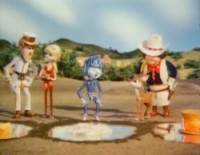
And Jack Frost completely redeems himself from when he became that petty, spiteful little spirit.
Length: 2 hours; Animation Style: Stop Motion; Year: 1979; Based on: Once again Muller, Rankin, and Bass’ insane imaginations, this time drawing from all the other specials
Crossover Characters: Santa Claus; Rudolph; Big Ben; Frosty; Crystal; Mrs. Claus; Jack Frost

As I said before, there are many different Rankin Bass specials I do not include here. Like The Little Drummer Boy (retelling the nativity story, but doing so straight, without references to Santa) and The First Christmas (which I saw once as a little boy and never forgot, but just doesn’t reference anything Santa, Frosty, or Rudolph related); Little Drummer Boy II, Pinochio’s Christmas, and The Leprechaun’s Christmas Gold (because I’ve never seen them, although the last two COULD potentially fit into this and maybe I’ll do that next year); and The Stingiest Man in Town (because it’s A Christmas Carol, really, and doesn’t fit).
EDIT: Pinochio’s Christmas features an appearance by Santa Claus. I thought I had not seen it, but when I watched it this winter I kept remembering so many things . . . I MUST have seen it before. But while it features the crossover character of Santa Claus, I wouldn’t include it in the “epic”. It doesn’t add anything, and it belongs to a different “mythology”: Pinochio’s.
The Leprechaun’s Christmas Gold is another I thought I had never seen, but after watching it I realized I was wrong. It has no crossover, though, with the “epic” so, although it does stand up with some of the lessor Rankin Bass Christmas specials, it’s not part of the “epic”.
The Miser Brother’s Christmas is a modern sequel to The Year Without a Santa Claus and while I’ve heard some of the other modern sequels, like Island of Misfit Toys and Frosty’s Modern Sequel (whatever the title is), are horrible . . . this one is not. It’s cute and clever and enjoyable. I liked it. Quite a bit, actually. So did my kids — they said it was better than the original. But it was not made by Rankin Bass, so I don’t include it here.
But if you’re planning to watch Christmas specials next year (or this — I’m still watching Christmas specials with my kids) here’s a fun way to do it. These are easily available to buy or borrow from libraries or whatever. Or you could Tivo a lot of these from ABC Family, then watch them in chronological order.
~ Ben


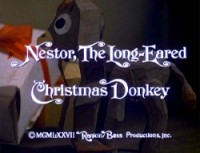
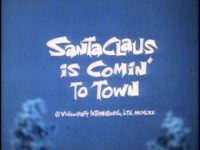
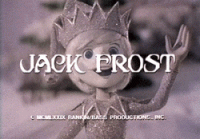
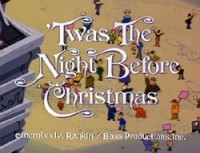
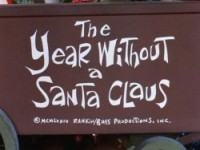
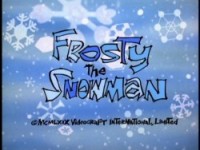
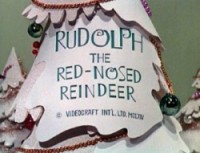
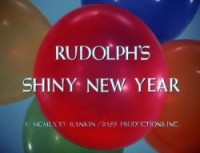
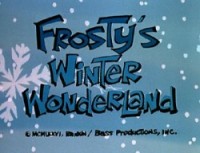
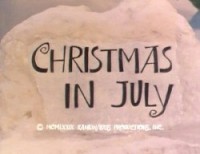
Leave a Reply to ZachCancel reply